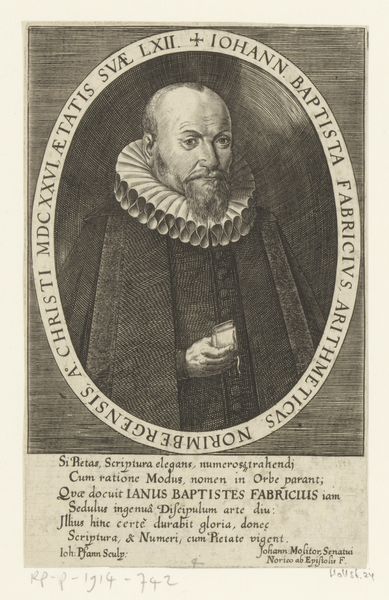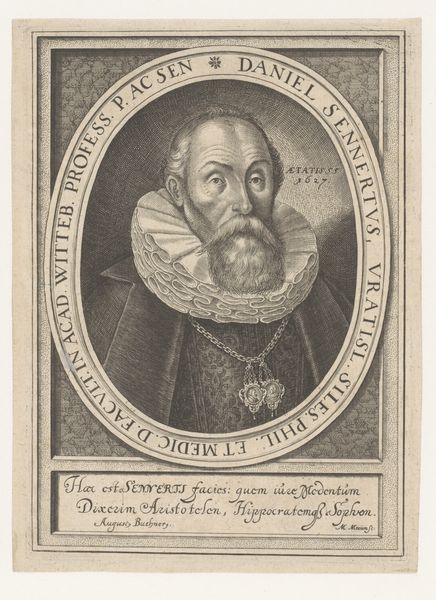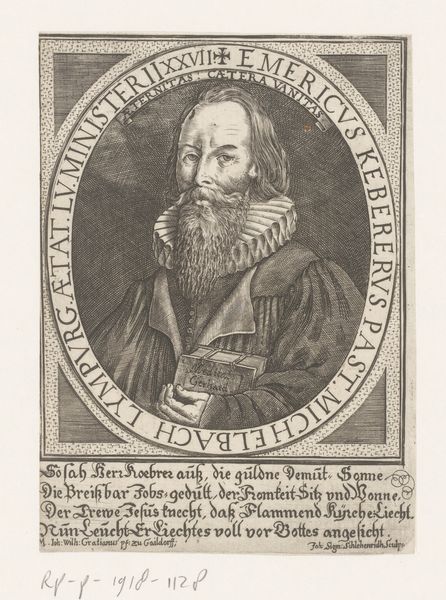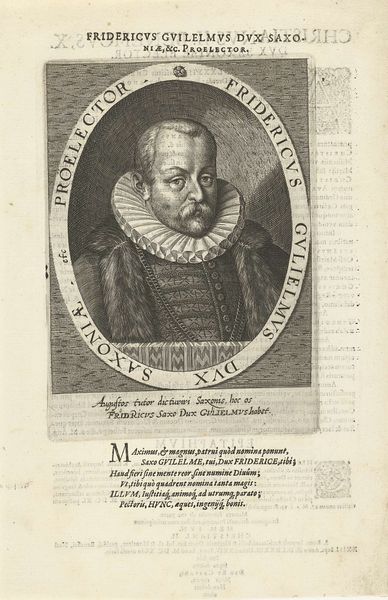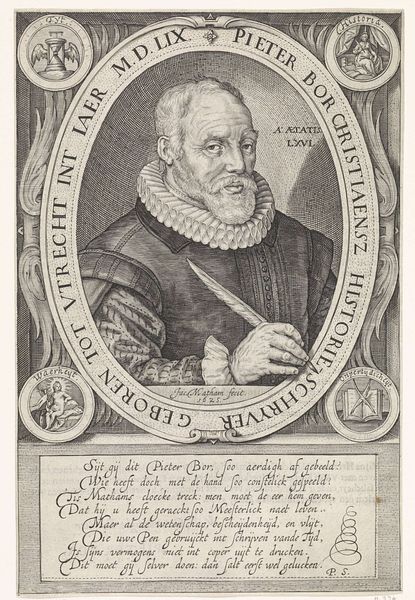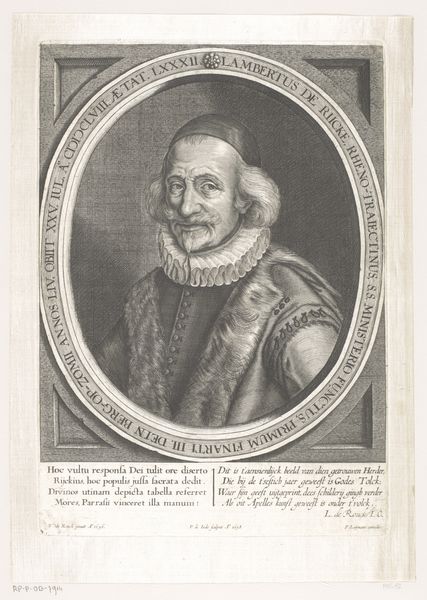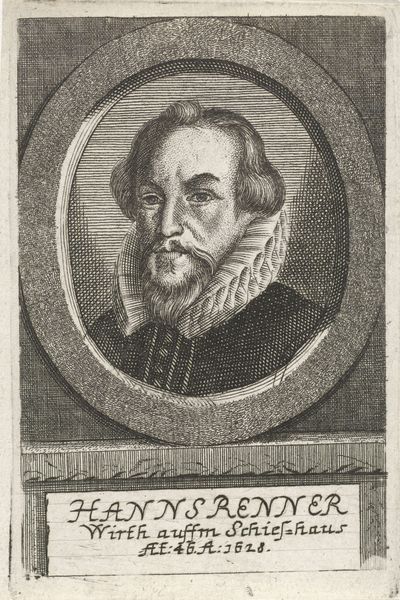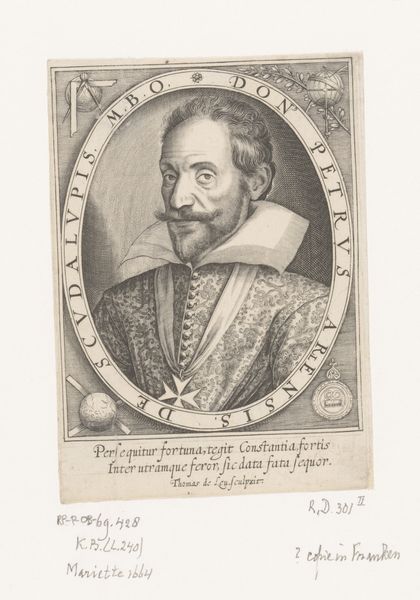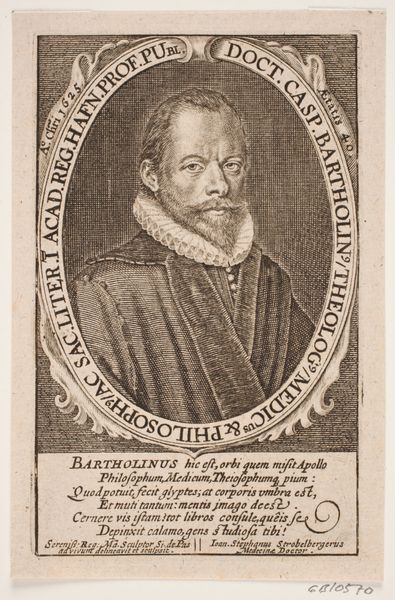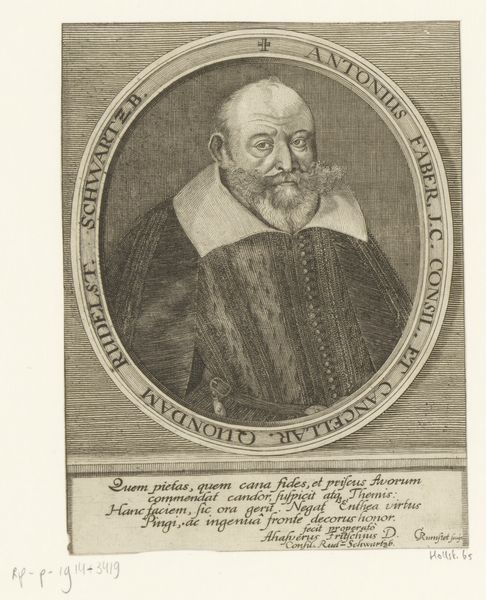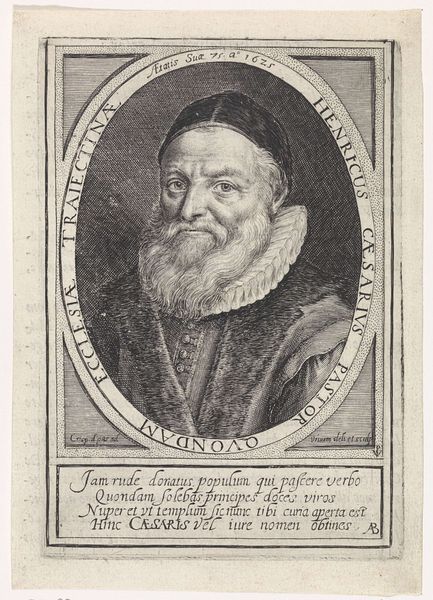
print, engraving
#
portrait
#
baroque
# print
#
engraving
Dimensions: height 150 mm, width 104 mm
Copyright: Rijks Museum: Open Domain
Curator: This portrait immediately strikes me with its formality. The man's gaze, the high collar, the severe lines—it's all quite imposing. Editor: Indeed. What we're looking at here is a print, an engraving, portraying Nicolas Abraham de La Framboisière, realized sometime between 1590 and 1665. It’s currently held in the Rijksmuseum. The engraver, Friedrich van Hulsen, has captured him with meticulous detail. Curator: That explains the crispness. The lines seem so deliberate. You can really see the engraver's tool at work. The face appears almost… etched into my memory already. Is it meant to convey something of his role or status? Editor: Absolutely. La Framboisière was, in fact, a prominent French physician during the reigns of Henri IV and Louis XIII. He held the titles of counselor and physician to the King. The engraving reflects this standing—his dress, his composed expression—all contribute to the image of a respected authority figure. Notice how the Latin inscription around the oval emphasizes his virtues and accomplishments. Curator: So, it’s about immortalizing the subject’s virtues? It has a feeling of a cultural monument; the rigid form and use of language give that sentiment, a lasting impression. Is this typical of portraiture from this period? Editor: Fairly common. During the Baroque period, portraiture, including prints like this, often served as propaganda—albeit in a subtle way. They presented an idealized image, reinforcing the subject’s importance within the social and political hierarchy. Here, the medium itself—an engraving—allowed for wider dissemination of his image. Curator: So the engraving functions not only as an artistic expression, but as an active tool in shaping public perception. Very interesting that these prints served a double purpose as symbolic representations of identity. Editor: Precisely. Through this engraving, Van Hulsen helps us see beyond just the likeness and understand the man within the context of his time. It shows how society and position were recorded into imagery. Curator: Well, I have to say, I'll be rethinking the power of portraiture, seeing them now less as simple depictions and more as consciously constructed statements about identity and place in society. Editor: A wonderful insight! And it serves as a potent reminder: every image has its politics.
Comments
No comments
Be the first to comment and join the conversation on the ultimate creative platform.
